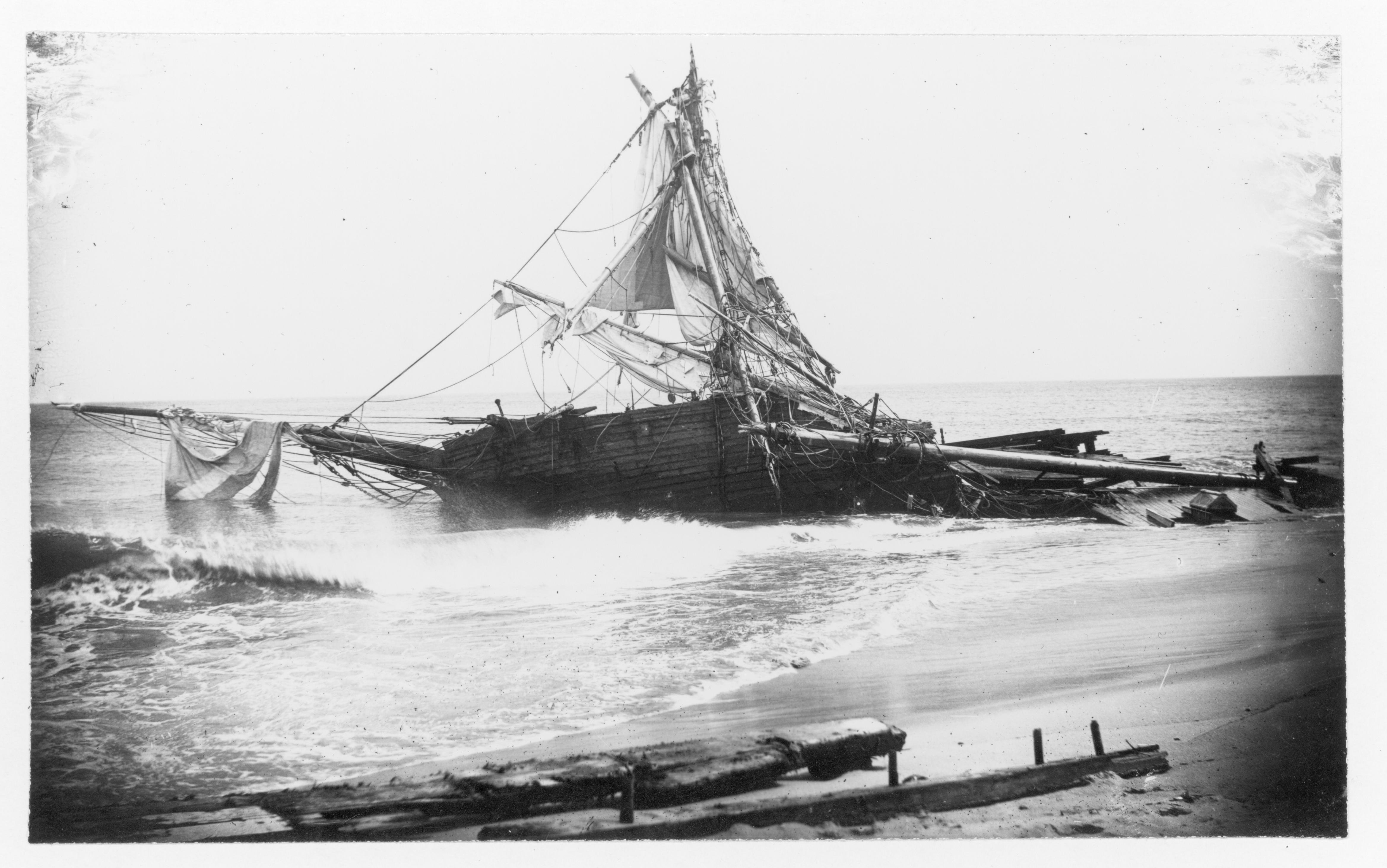
It was a misty morning on January 16, 1894, when “Fannie J. Bartlett,” a three-masted schooner transporting coal from Philadelphia to Boston, ran onto an outer bar just two miles east of the Napeague Life-saving Station. Captain A. T. Hutchins was following a pilot boat when he lost his bearings in the fog at 4 am.
“The steam tug ‘America’ was sent for and she arrived from New London at four o’clock Tuesday afternoon, but failed to render any assistance. During the night the schooner pushed her bow further onto the bar, and by Wednesday morning it was thought she was leaking,” reported the East Hampton Star on January 19, 1894. The captain and his crew of ten were rescued from the ship by volunteer life-savers stationed at Napeague.
Captain Hutchins was part owner of the vessel and had been in command for 40 years with no accidents. To his advantage the ship and its cargo were well covered by insurance. He placed the vessel in charge of the Merritt Wrecking Company of Amagansett and by February 2, the wrecked schooner, replete with rigging, tackle, and cargo of approximately 1,250 tons of coal, was put up for public auction.
The vessel’s name plate, reading FANNIE J. BARTLETT in 10-inch letters, was salvaged and later nailed to a pole at the Long Island Rail Road’s flag-stop at Napeague. In Ship Ashore, Jeannette Edwards Rattray credited Nathaniel Dominy Sr., who occupied a fishing shack at Napeague, for christening the stop “Bartlett Station.”
Bartlett Station was located between Amagansett and Montauk. It was a simple flag-stop with a platform built for the convenience of fishermen who shipped products by rail and for men stationed within walking distance at the Napeague Life-saving Station. It was added in 1895 when the Long Island Rail Road finished the branch from Bridgehampton to Fort Pond Bay.
“The Bartlett stop was at the east end of what we call The Pines,” recalled Captain Samuel S. Edwards of Amagansett, quoted in Ship Ashore. Another flag-stop, named Napeague Beach, primarily served commercial fishermen who met trouble hauling their bounty across the sandy roads of the stretch. Both flag-stops were decommissioned by 1928. Little to no trace of the stations remains.

Reply or Comment